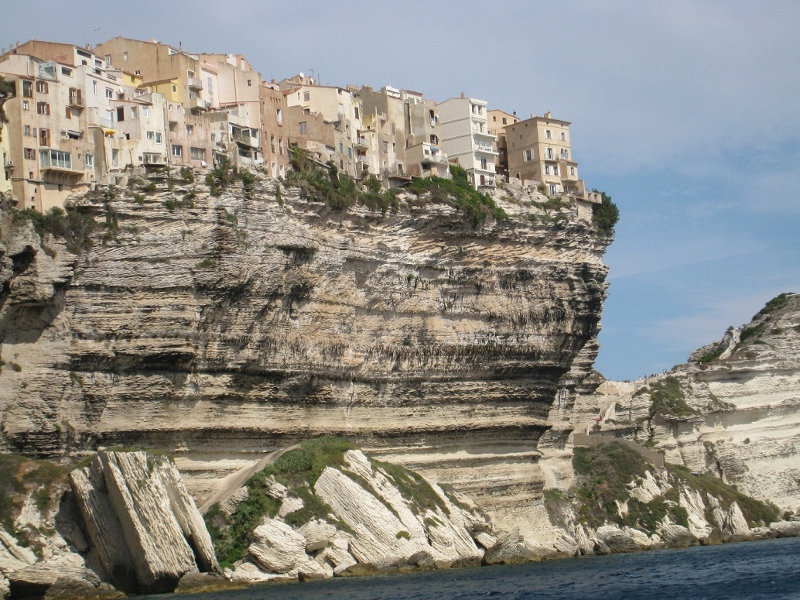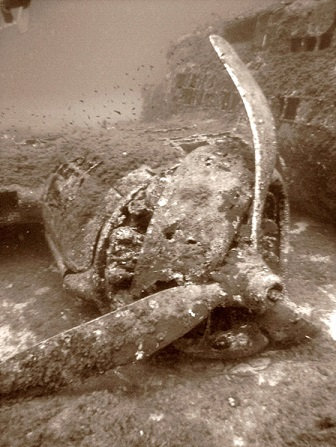Corsica Travel Guide
If you are looking for a destination that perfectly marries culture with relaxation, then look no further than Corsica. This jewel of the Mediterranean has been inhabited since 3000BC and has seen wave upon wave of history on its shores. Everyone from the Ancient Greeks and Romans through to the UK’s very own Lord Nelson have lain siege upon this mountainous island, leaving their mark forever in its history. But the beautifully rugged island of Corsica is not just the birth place of Napoleon, it also plays home to over 1000 kilometres of stunning coast line and is a hikers dream.
Personally, I don’t feel that just one, short trip to Corsica does it justice. Instead I would recommend spending a few weeks exploring the island or revisiting this intriguing isle on more than one occasion. In this guide, I’d like to share the places and attractions that I visited on my travels to Corsica, to help you plan your trip and get the most of this destination.
Bonifacio
Completely surrounded by the citadel walls, Bonifacio is a labyrinth of irregular side streets and narrow alleyways flanked by mediaeval town houses. This stunning clifftop town juxtaposes modern, chic boutiques with ancient architecture and historical sights and is a fantastic day out for anyone who enjoys variety.

There are many attractions in Bonifacio, but here are my top choices:
Rue des Deux Empereurs
If history is your passion, then this attraction is for you. The Rue des Deux Empereurs allows you to follow in the footsteps of Charles V and Napoleon I, who both used to reside on this street. Sadly their former homes are not open to the public, but a wander down this historic road will also allow you to see the beautifully carved alleys that form aqueducts to collect rain water.
Porte de Genes
Right up until 1854, the Porte de Genes was the only entrance into the citadel. This fascinating drawbridge still operates the same weights and pulley system that it was originally installed with- right back in 1598!
Bastion de L’Etendard and Memorial du Passe Bonifacen
Nearby to the Porte de Genes, the Bastion de L’Etendard hosts a small museum, ‘the Memorial du Passe Bonifacen’, and gives you the opportunity to see the only surviving part of the fortifications destroyed in the 1553 siege by the French/Turk alliance. At the museum itself, you’ll find a reproduction of the prehistoric ‘Dame de Boniface’ skeleton, be able to walk over the battlements and gain access the tiny ‘Jardin des Vestiges’. Even if history isn’t something that particularly interests you, a visit here is recommended as the views are breath-taking!
Il Torrione (Rue des Pachas)
If stunning views are top of your priority list, make your way to the top of the 35-metre lookout tower on the Rue des Pachas. Originally built in 1195, this round tower is the last remaining part of the original Tuscan citadel.
Escalier du Roi d’Aragon (King of Aragon Steps)
For me, the best views from the citadel can be found at the top of the 187 steps of the Escalier Roi d’Aragon. Legend has it that these steps were carved into the limestone cliffs on one night, in a failed bid by the Argonese to conquer the town of Bonifacio in 1420. Sadly this tale isn’t quite true and the steps were actually in existence before this event, possibly used by the locals to carry water to and from the citadel. The walk up the stairs does require a little effort, but it is well worth it.
The Bosco
Given the rich military history of Corsica, it will come as no surprise that many of the attractions are rooted in this theme. The Bosco is an interesting place to visit with stunning views and ornate tombs and mausoleums. Here you can also find the Cimetiere Marin (Marine Cemetery) and the former barracks of the French Foreign Legion Parachute Regiment.
Eglise Saint-Dominique and Eglise Sainte Marie Majeure
There are many churches throughout Corsica, but in Bonifacio there are two that are must-sees.
At the entrance to the Bosco, the Gothic-style Eglise Saint Dominique, built in the late 13th century, is home to various relics and is thought to be the grounds of an ancient temple.
The Eglise Saint Marie Majeure is the main church of Bonifacio and dates back to the 12th century. Although numerous modifications and renovations have taken place over the years, the church still retains its splendour, especially inside.
Rue du Palais-de-Garde
Running alongside the Eglise Sainte Marie Majeure, the Rue du Palais-de-Garde is one of Bonifacio’s most attractive streets. Here you can walk amongst some of the oldest houses in the area and marvel at the twist and turns and curves and arches of the architecture.
Shopping
Once you’ve had your fill of history and culture it’s time to see the other side of Bonifacio. The old town has a great selection of souvenir and jewellery shops, and there really is something for everyone. I would, however, urge you to check the price tag, as some shops can be on the expensive side!
Corte
Roughly 2 hours north of Bonifacio sits Corsica’s former capital, Corte. Like its costal sister, Corte boasts a citadel that offers a plethora of historical sights and cultural experiences. If it’s cobbled streets and quaint boutiques and eateries you’re after, Corte certainly delivers. However, for me, the highlight of this city is its surroundings and natural beauty.
Corte is framed by granite-grey, craggy mountains, which provide spectacular views and excellent hiking adventures. Corte is a great base if you fancy spending your time exploring the mountains but still want to enjoy the luxuries of a cosmopolitan, yet relaxed, city in the evening. Natural splendour is in abundance in Corte, but the following recommendations are two of my favourites:

Corsica National Park
Corte is lucky enough to be slap bang in the middle of the Corsica National Park. Within its 3,500 square km, visitors will be treated to a huge range of sights and sounds, from lush forests and lakes to dramatic mountains and gorges. The majority of the national park is non-coastal, but still offers a collection of cooling rock pools and rivers. In short, it is a simply stunning part of Corsica!
The animal lovers amongst you are also in for a treat, as you might be lucky enough see golden eagles, bearded vultures, wild boars, deer and wildcats, as well as numerous other species of flora and fauna. So pack your boots and a picnic and get out there and explore Corsica’s incredible national park.
Gorges de la Restonica
If you head south from Corte, you will find the Gorges de la Restonica, which, in my opinion, are one of the best scenic highlights on the island.
The Restonica River flows through verdant forested gorges, which are accessible on foot. The reward after each hiking trail is a dip in one of the cooling river pools. The most popular path with visitors is to the two lakes - Melo and Capitello, which will take approximately 4 hours from start to finish.
For many, ‘pool hopping’ is more than adequate exercise, but for those who like their holidays full of something slightly more energetic, there are also some more challenging walking routes. One of the more popular yet demanding walks is to Monte Rotondo, which stands high above the valley, through the pine forests. However, I would recommend that only adept walkers take on this route, as it requires a degree of experience and preparation.
Calvi
Head north-west from Corte and you’ll find yourself in the chic coastal town of Calvi, where French style meets Italian sunshine. My recommendation is to arrive this picturesque port via boat; the approach to the gorgeous harbour is quite a sight to behold! Calvi itself boasts traditional Corsican culture yet manages to integrate the comforts of a modern resort seamlessly. You can certainly get your fix of history and culture here, but for me the star attractions are the maritime pursuits.

Port de Plaisance (Marina)
When visiting Calvi, I really enjoyed spending some time walking along the Port de Plaisance, admiring the million-pound, luxury yachts which sat side-by-side with colourful fishing boats. The hubbub of this harbour, mixed with the spectacular view, made me feel like I was in St. Tropez or Cannes!
I’d highly recommend experiencing one of the boat trips or pleasure cruises whilst you are here. There are many trips from Calvi to the Scandola Nature Reserve, where you see a coastal nature reserve with clear water, caves, rich marine life and a multitude of sea birds, including cormorants and eagles. This trip can either be done in half or a full day, but it is worth setting time aside during your visit to Calvi to experience this beautiful feature of the Gulf of Porto.
Once you’ve had your fill of boats, the Quai Landry, which is next to the marina and connects it to the Port of Calvi, provides a beachside walk packed full of restaurants, bars, cafes, shops and hotels. It’s a great place to relax after a day at sea.
Calvi’s Beaches
For many visitors to Calvi, the star attraction, and main purpose of their visit, is the beach. And it’s no surprise! With white sands, azure waters and postcard perfect vistas, you could almost be sat in the Caribbean! The beach may be narrow, but it stretches for over 4 miles along the length of the bay and provides the perfect backdrop for sheer relaxation. If you’re looking for an even more peaceful and less popular place to get your vitamin-D boost, try the ‘Plage de l’Alga’ near ‘Revellate Point’.
However, if like me, the very thought of sitting around doing very little drives you mad, then, thankfully, Calvi’s beaches offer a plethora of water sports and activities. With everything from water skiing and windsurfing, to jet skiing and paragliding, there’s something to satisfy even the most high-octane thirsty tourist!
Diving
Whilst it is not quite the Red Sea, there is some very good diving off Calvi. As a keen Scuba Diver myself, most of my holidays involve me donning a wet-suit and exploring the underwater world, and Corsica was no exception. The visibility was OK, and I even saw some moray eels, wrasse and lobsters, but diving in Calvi is more about exploring the ‘Flying Fortress’.


The wreckage of an American B17 Bomber (aka ‘The Flying Fortress) is one of 4750 that were lost during WW11. Today the wreck sits at round 27 meters down, at the foot of the old city of Calvi. As I started to descend down onto the wreckage, it quickly became clear just how huge it was! It was also impressive to see just how intact the plane is, with both wings and two wings and 4 engines still attached and in good conditions.
Bastia
Corsica’s second largest and most successful commercial town is Bastia. This bustling town with a population of circa 50,000, dates back to Roman times and sits on the East coast of Corsica, looking out to the Tuscan peninsular. This charismatic slice of Corsica is often overlooked by tourists, which means that a visit will give you a slightly more authentic experience. Plus, you can see all of the sights in roughly one day, so you will be able to soak in all the sights and sounds in just a short visit.

Place St. Nicolas and Surrounding Streets
Your first port of call after arriving in Bastia should be the Place St. Nicolas, otherwise known as ‘le coeur de la ville’ (heart of the town). This palm-tree lined square has somewhat of a ‘regal’ air about it and offers everything from shops to cafes and bars, giving the square a very social feel. Here you will find 3 monuments: ‘Le Monument aux Morts’ (a bronze statue of a mother giving her third son to the Motherland), a statue of Napoleon, and a bandstand.
Personally, I’d pay a visit to Place St. Nicolas on a Sunday, when the square regularly plays host a flea market. If markets are of specific interest to you, weekly markets are also held on Saturdays and Sundays in the Place du Marché.
The streets surrounding the Place St. Nicolas are also worth a visit. On the west side of the Place Saint-Nicolas is the Boulevard De Gaulle, which leads to the Rue Napoleon. Along this road you will find the Oratoire St. Roch, which looks deceptively plain on the outside, but hides an exquisite Baroque interior. A little further along is the Oratoire de l'Immaculee Conception, which dates back to 1611, and has a beautiful pebble mosaic in front of its doors.
If shopping is of particular interest to you, the Boulevard Paoli and Rue César Campinchi are the main shopping streets running parallel to the square. These streets form part of the old town and are close to the Vieux Port and the Place du Marché, where there is a local farmers market each morning.
The Vieux Port
If you are feeling like a spot of exercise, I highly recommend taking the uphill walk to the old port. Overlooked by the grandiose, 17th century church of Saint-Jean Baptiste sits the Vieux Port, or ‘old port’. The slightly ramshackle, pastel buildings that flank this harbour, indicate a very different port to that of Calvi, but it is as equally charming. This is a great place for lunch, as you can sit outside one of the many cafes and watch as the catch of the day is brought in.
Whilst dining, why not sample a local aperitif called ‘Cap Corse’, which is a wine infused with orange and other fruits found on the island. Before the ‘Vieux Port’ came to be, its predecessor, ‘Porto Cardo’ used to be a thriving wine exportation hub. So, if you’re going to sample wine in Corsica, the Vieux Port in Bastia is the place to do it!
The Genoese Citadel
If you walk up from the old port, you'll come to the Genoese Citadel. Inside the walls is a village called the Terra Nova, the new town.
The building of the Genoese Citadel began in 1378, around the same time that Bastia itself was founded. During this period, Bastia was the capital of Corsica, and continued to be so until around 1768. During this time, the Governors from Genoa had their palace, ‘Palais des Gouverneurs’, which now houses the ‘Musée à Bastia’, where you can learn about the evolution of society in Bastia and Corsica. A visit to the palace and museum are recommended, as they are great way to learn more about the culture and history of Bastia, whilst taking in the spectacular views of the hill-top citadel.
Conclusion
I hope you’ve enjoyed this Travel Guide to Corsica. It really is a stunning island, full of pretty ports, breath-taking beaches, rugged mountainous landscapes and fascinating history. Anyone who has read one of my other travel guides will know that I love diversity when I travel, and Corsica certainly delivered this in bucket-loads! So why not give this rough diamond a try; I know you’ll fall in love with Corsica as much as I did.

